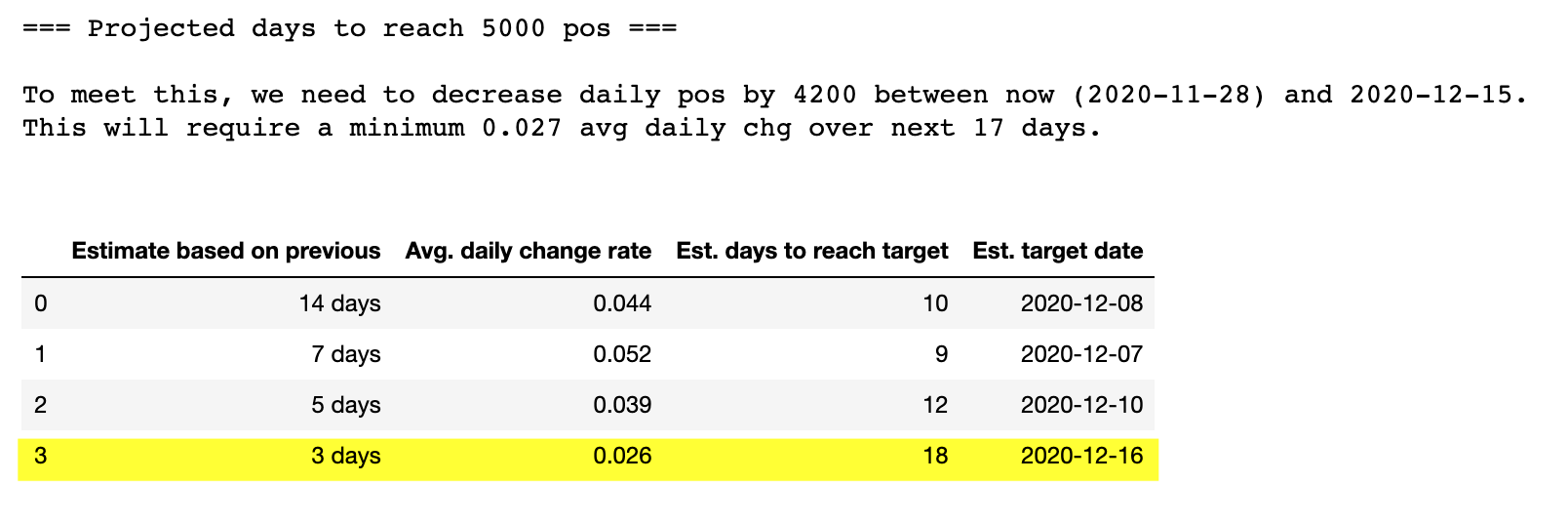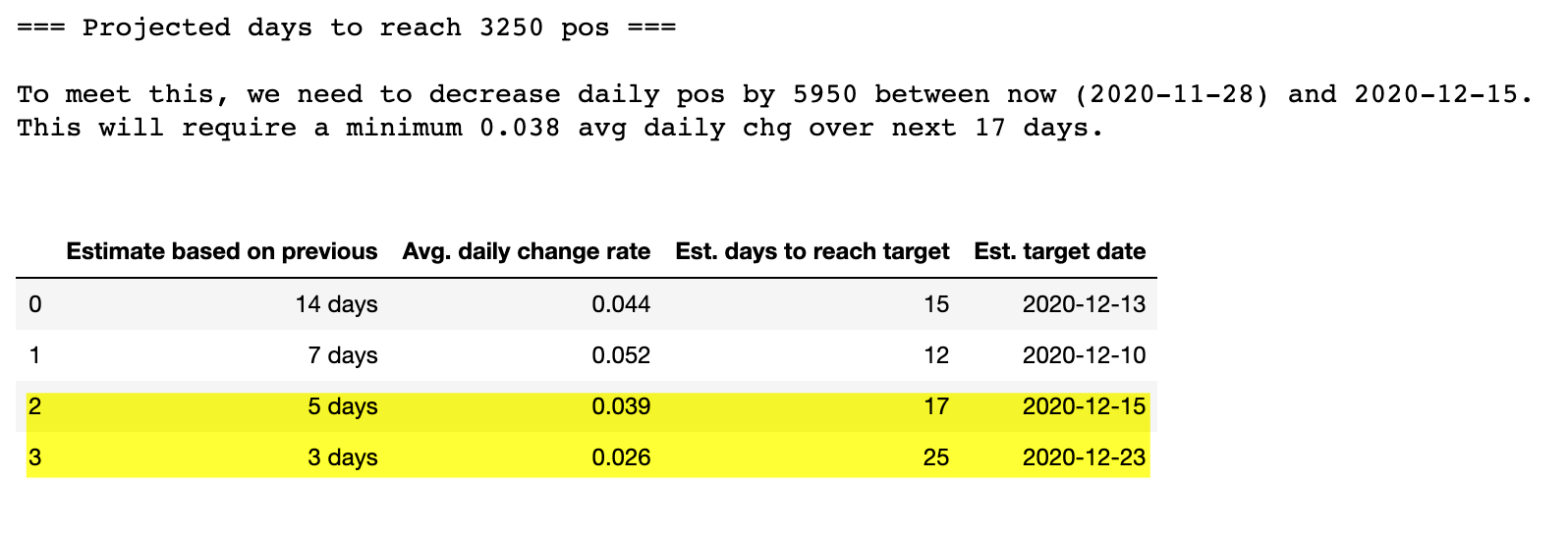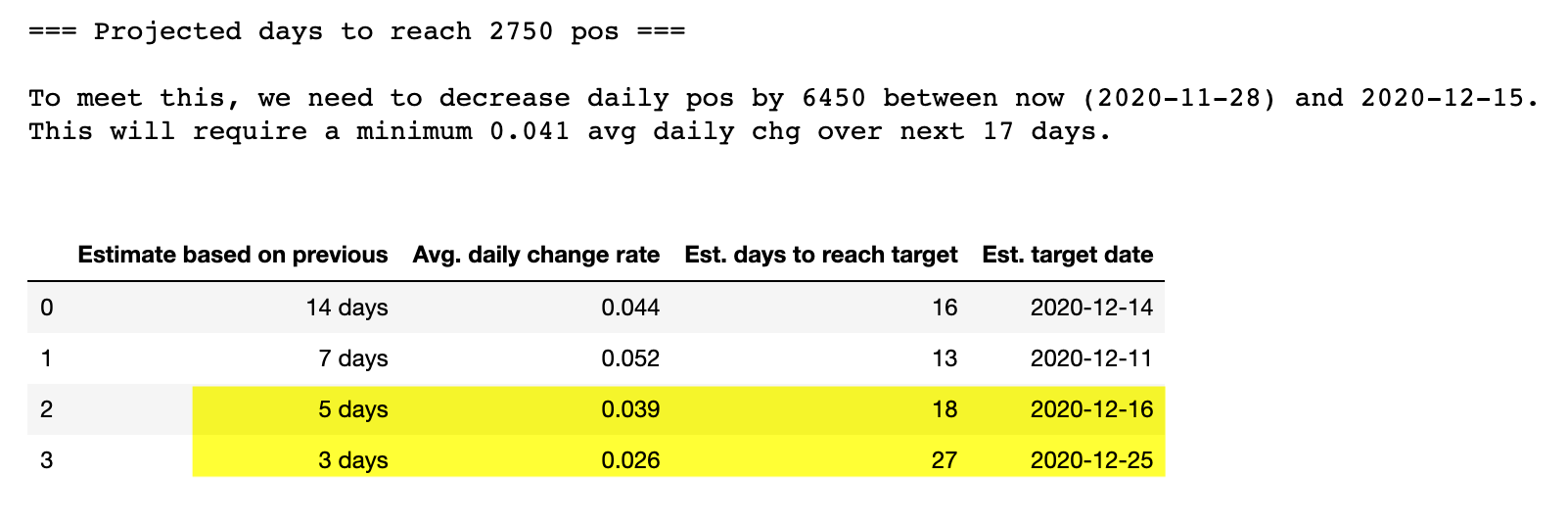Countdown to Dec 15: Two weeks to go
14 more sleeps before we know if we can roam unrestricted.
As a reminder, the targets are under 3000 Covid patients in ICU, and 5000 daily new cases by Dec 15.
How are things looking since my previous update? It’s a mixed bag, notably for new positive cases.
Below you can see charts that track the progress since Oct 28 (the start of confinement #2), as well as a few projected timelines for reaching these targets.
ICU looking good for now
So far, ICU looks on-target, although the rate of decrease has slowed down lately.
The numbers behind these projections
You can see that even with the recent slowing, the 3-day average change still has ICU occupancy meeting the target of 3000 by Dec 13 - 2 days ahead of schedule. For now.

The decrease in new cases is slowing
The decreases in daily cases is starting to level off in past few days.
If you estimate how many more days are needed to reach 5000 cases using the last 3 days’ average decrease, we’ll miss the Dec 15 target by one day.
The numbers behind these projections

Another worry: these plots under-report new cases
Like other data geeks (including the data journalists at Le Monde and Le Parisien), I’m using the only Covid test data that’s publicly available.
It’s from the SI-DEP system, built last spring in record time especially for tracking Covid test results. (More details on this system on data.gouv.fr.)
Unfortunately, this dataset only includes the results of PCR tests. However, antigen tests, which were introduced in October, are now accounting for an increasing portion of positive cases:
- In week 45 (Nov 2-8), positive antigen tests accounted for 3% of new cases;
- In week 46, 8%;
- In week 47, 10%.
So obviously, the antigen test data exists: in their nightly updates on new cases in the past 24 hours, Santé Publique France now shows the breakdown of positives from PCR tests vs positives from antigen tests.
However, this is a webpage that gets updated (ie, overwritten) every night around 20h. It seems that they only way to make a daily record of positive results from antigen tests publicly-available is to enter them into the SI-DEP system, but it’s proving a challenge.
(For more details: Le Monde and pages 5 & 13 of the SPF weekly update)
Why is the lack of antigen test data a problem?
It means the numbers in these plots underestimate the true number of daily positive cases, so the “distance” between where we are now and our Dec 15 target is actually larger.
There are also larger questions, notably how easily the health authorities themselves can access antigen test results? This seems kinda important for timely infection tracking.
Le Monde’s article (linked above) touches on this, but it’s certainly beyond the scope of what was supposed to be a ‘quick update’!
Could this make us miss the target for daily cases?
Potentially.
Looking at the Dec 1 update from Santé Publique France, antigen tests accounted for 23% of positive cases in the past 24 hours (1882 cases out of 8083 total):
On Sunday Nov 30, the website showed that antigen tests accounted for an even higher proportion (38%). However, that is probably due to PCR results always being lower on the weekend, since many of the labs that perform them are closed.
(This is why plots usually show 7-day rolling averages for anything to do with testing, to smooth out these intra-week variations)
How to account for antigen tests in projections?
To compensate for under-reporting positive cases, we can make the target correspondingly more difficult.
Below you can see how reaching the target could become trickier.
I hate looking at numbers. Just tell me what to do
25% more difficult

35% more difficult

45% more difficult

Agggh - enough already! What’s the takeaway?
You can probably guess what I’ll say here. If deconfinement on Dec 15 is important to you, you can help make it more likely by:
- reducing your interactions as much as you can.
- wear a mask over both nose and mouth, especially when you are talking.
- regularly opening the window when you’re in a closed space with other people.
- and of course, washing your hands.
This post shows the different ways you can reduce transmission risk, depending on your circumstances.
